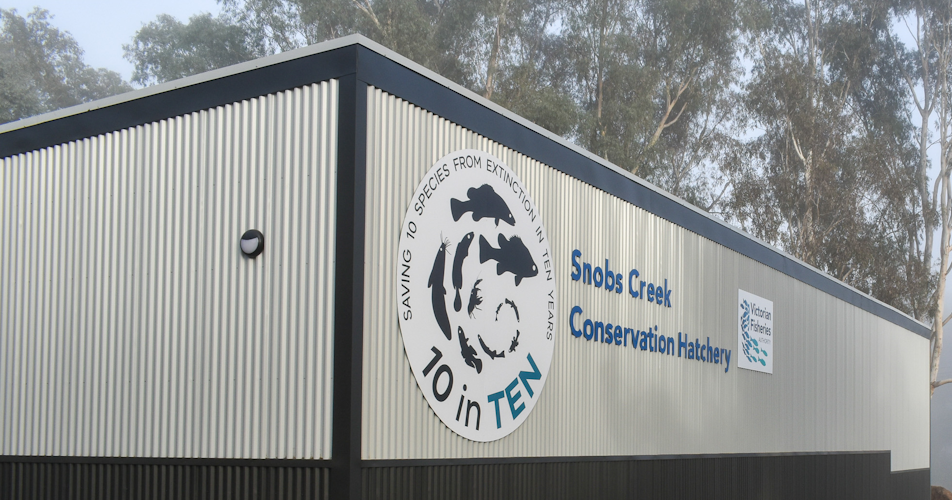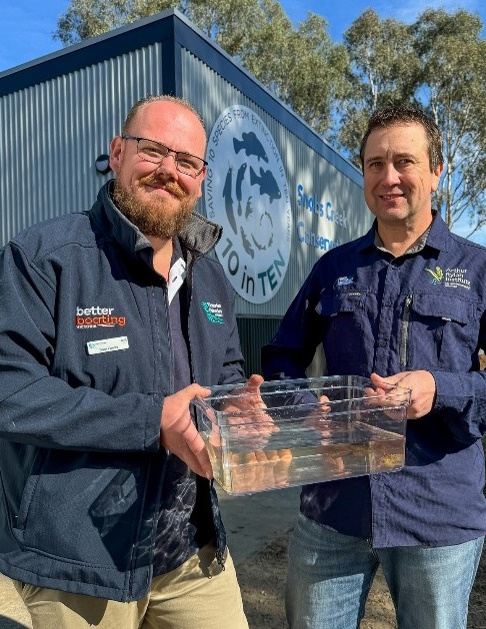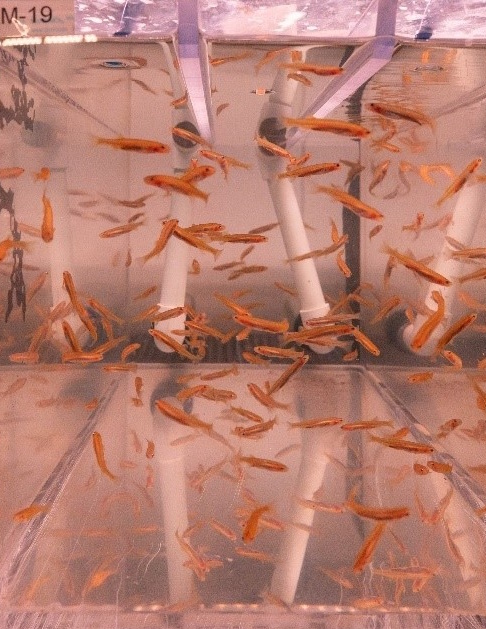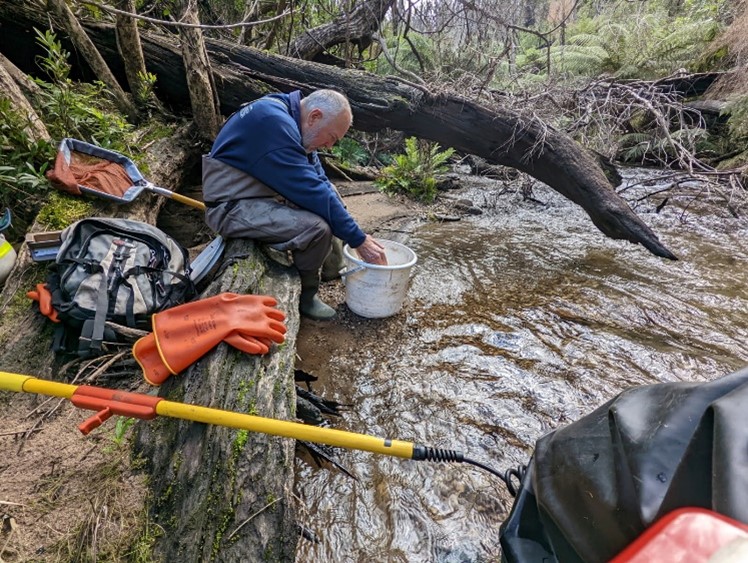In short
|

10inTen Conservation Hatchery Building, Snobs Creek
Captive breeding can help protect species from extinction
Victoria is home to incredibly diverse freshwater animals that are of both ecological, cultural and recreational significance. Our most vulnerable freshwater animals only exist in small, fragmented and narrow distributions; and single extreme events such as bushfires, droughts and floods could cause the species’ extinction.
More than 30 freshwater fish and 20 crayfish species are recognised as threatened under the Flora and Fauna Guarantee Act 1988. Many of these species are also recognised as threatened Nationally, under the Environment Protection and Biodiversity Conservation Act 1999.
Captive breeding of our threatened freshwater species is an essential part of future conservation efforts to prevent extinction. It will help species recover from extreme events (such as bushfires, droughts and floods) and complement broader river and wetland rehabilitation efforts.
10inTen – an ambitous goal for threatened aquatic species
In May 2024, Victoria’s Conservation Hatchery was opened at the VFA’s Snobs Creek Hatchery to captively breed at least 10 threatened species in the next 10 years.
This new facility enables scientists, Traditional Owners and industry to work together to:
- select species
- plan breeding and release programs
- improve population genetic diversity
- undertake community education.
The 10inTen program means Victoria will be better placed to deal with extreme events by spreading the risk, strengthening genetics, creating ‘insurance’ populations, and stocking for conservation purposes.
10inTen contributes to an integrated approach to fish recovery where multiple interventions are needed, including providing environmental flows and rehabilitating and protecting their habitats.
10inTen is a strong collaboration between ARI, the Victorian Fisheries Authority (VFA), and many Traditional Owners, catchment management authorities and interest groups. Linking in with relevant plans and strategies at state and national scales is helping achieve multiple goals within a single program.

Sam Fawke, VFA and Jarod Lyon ARI with Murray Spiny Craylings at the Conservation Hatchery (Photo: DEECA)
What we are doing
The working relationship between ARI and the VFA is integral to the success of 10inTen. ARI is involved in species’ selection, collection of brood stock, the selection of release sites and subsequent population monitoring.
VFA brings a wealth of expertise to the maintenance, rearing and release of aquatic species and engagement of recreational anglers. Significant progress has been made at the Conservation Hatchery in its first year, which includes:
- Two nationally Critically Endangered fish species (Moroka Galaxias and McDowall’s Galaxias) were successfully bred at the hatchery and released in East Gippsland.
- Three nationally Critically Endangered galaxiid species (West Gippsland, Tapered and Yalmy Galaxias) are in the hatchery, adapting to conditions and ready for breeding in 2025.
- The culturally significant River Blackfish was successfully bred for the first time and released at three sites in the Grampians area.
- The nationally Vulnerable Murray Spiny Crayfish was successfully reared at the hatchery and released in the lower Goulburn and Little Murray Rivers.
- The nationally Critically Endangered Glenelg Freshwater Mussel and the nationally Critically Endangered Flathead Galaxias are in the hatchery – whilst there were unsuccessful breeding trials in 2024, more trials are planned for 2025.
- The nationally Endangered South Gippsland Spiny Crayfish and Victorian Endangered Narracan Freshwater Mussel have been collected from the wild and are adapting to hatchery conditions in readiness for breeding trials in 2025.
- The Victorian Critically Endangered Southern Purple-spotted Gudgeon has been bred and released at multiple sites across Victoria.

Moroka Galaxias fry at the Conservation Hatchery - photo by Marcia Riederer, DEECA

Tarmo Raadik (ARI) collecting Yalmy Galaxias - photo by Mike Nicol
The 10inTen collaboration has also contributed to multiple rescues of Blackfish, crayfish species and Flathead Galaxias in support of flood and fire responses, as well as the return of the Olive Perchlet to Victoria (a species previously believed extinct).
Whilst called 10inTen, there are in fact about 27 species with potential to be bred at the hatchery or at the Arcadia Hatchery, which have conservation and cultural significance. This includes large-bodied native species such as Freshwater Catfish and Macquarie Perch.
Acknowledgements
This project has been funded by contributions from Victorian and Commonwealth governments, including DEECA, the Victorian Environmental Water Holder (VEWH), the Commonwealth Department of Climate Change, Energy, the Environment and Water (DCCEEW) and through Disaster Recovery Funding Arrangements.
More information
For further information contact Jarod.Lyon@deeca.vic.gov.au. You can also view the extended project video 10inTen - Recovering Victoria’s Most Threatened Aquatic Species, or visit our partner's webpage, Conservation Hatchery – VFA.
Page last updated: 03/12/25